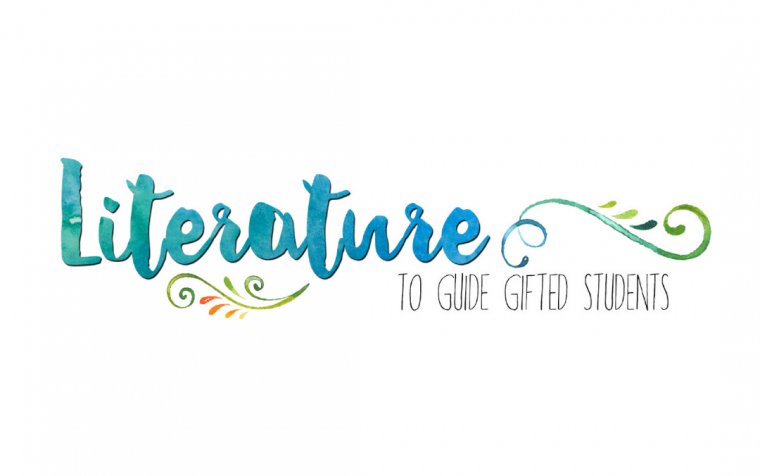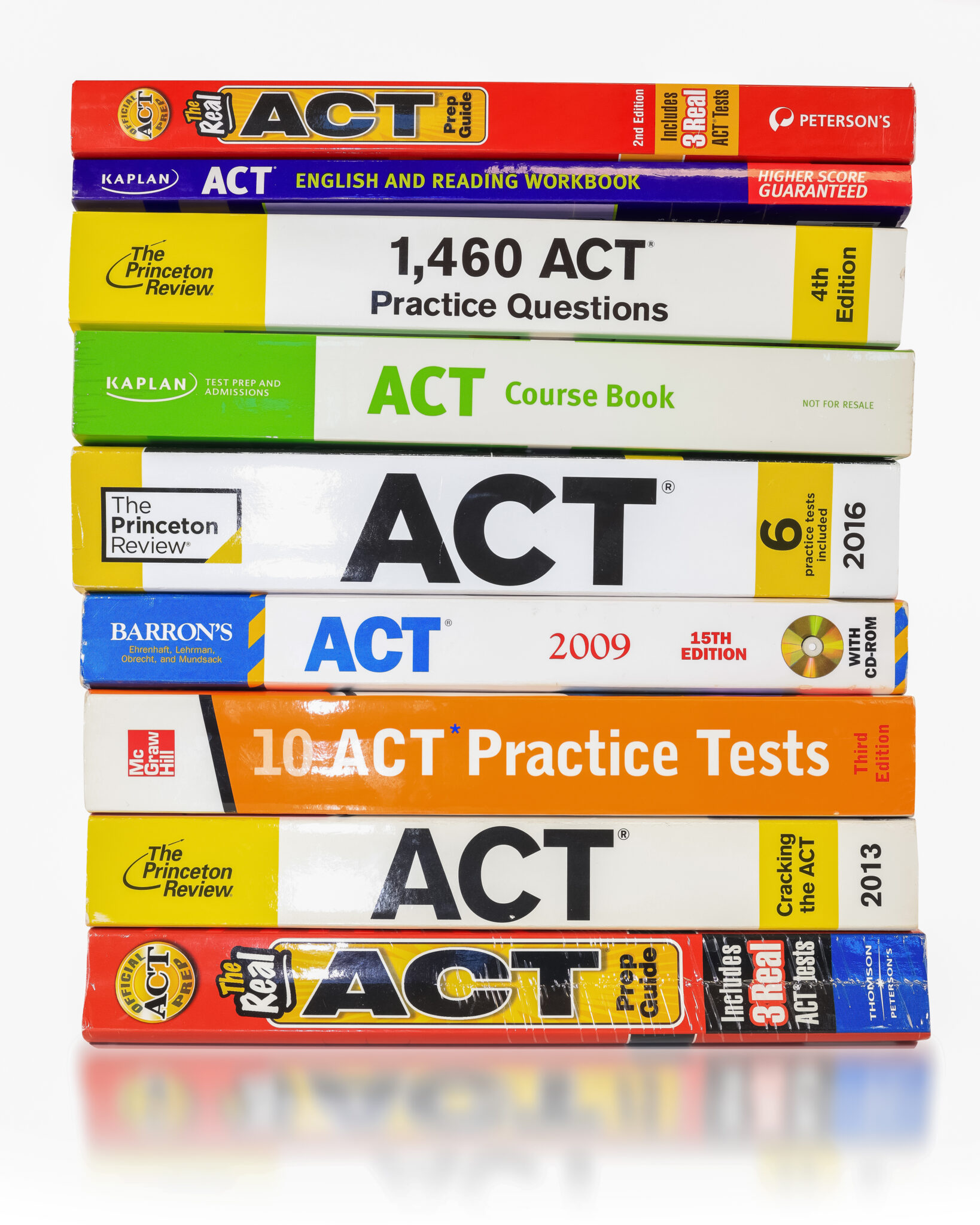Many gifted students are also gifted or fluent readers. As Thomas Hébert noted in his 2011 book Understanding the Social and Emotional Lives of Gifted Students, “authentic interactions with literature contribute to overall effective growth” (p. 207). One of the easiest ways to influence the social and emotional development of gifted students in your classroom is to build a classroom library of books with diverse characters that relate to the issues students are facing in their own lives. The list below includes many books recommended by Hébert for guiding gifted students, as well several newer titles that will appeal to your students, along with a list of topics each book addresses.
Books for Grades 3–5
The Landry News by Andrew Clements (creativity; perseverance; using one’s talents for positive results; positive role models): A fifth grader writes an editorial about her teacher that inspires many important changes at her school.
Because of Winn-Dixie by Kate DiCamillo (image management; family relationships; coping skills): Because of an ugly, cheerful dog named Winn-Dixie, 10-year-old Opal learns to connect with those around her as she finally begins to cope with the fact that her mother abandoned her several years ago.
Waiting for Normal by Leslie Connor (coping with family challenges; searching for friendship; finding emotional support beyond one’s family): Addie must learn to understand her mother’s erratic behavior and being separated by her loving stepfather and half-sisters when she and her mother move out to live on their own.
Nobody’s Family Is Going to Change by Louise Fitzhugh (gender role expectations; family relationships): Emma, who is very intelligent, wants to become a lawyer. Her 7-year-old brother, Willie, wants to become a dancer. Their father is opposed to both of these career choices.
Joey Pigza Loses Control by Jack Gantos (living with attention deficits; father-son relationships): With new medications, Joey believes his attention deficit disorder is under control and he can begin to live as a normal kid. But his father believes Joey can deal with his ADD without the help of drugs. Is it worth losing his self-control?
Julie of the Wolves by Jean Craighead George (image management; family relationships; being alone; perseverance): Miyax rebels against a home situation that she finds intolerable. She becomes lost in the Alaskan wilderness, without food or a compass. She survives day-to-day and is forced to redefine the traditional richness of Eskimo life.
Pictures of Hollis Woods by Patricia Reilly Giff (identity development; positive role models; creativity; artistic giftedness): Hollis Woods has a history of running away from foster homes until she bonds with Josie, her new guardian, who is a slightly eccentric, retired art teacher who encourages Hollis to explore the world in her sketchbook.
The View From Saturday by E. L. Konigsburg (positive role models; peer relationships; creativity; individuality): Four sixth graders, with their own individual gifts and talents, develop a special bond when they are recruited by their teacher to represent their class in an Academic Bowl competition.
The Schernoff Discoveries by Gary Paulsen (peer relationships; scientific giftedness): Harold Schernoff is a science whiz and a social nerd. He has a theory for solving every problem, from middle school dating to how to buy a car when you’re under age. When he and a friend join forces to test his theories, nothing goes according to plan.
Ghost by Jason Reynolds (poverty; peer relationships; talent development; positive role models): Ghost’s fastest run to date was when he and his mother fled his abusive father. But when he stumbles on a local elite track team and challenges one of its members to a race, Ghost learns he might have talent and potential he didn’t think possible.
Counting by 7s by Holly Goldberg Sloan (academic giftedness; different types of families; grief): Willow Chase, a 12-year-old genius who finds comfort in counting by 7s, suddenly finds herself alone after her parents’ death. She pushes through grief and learns that she has as much to offer her surrogate family as they can give her.
Loser by Jerry Spinelli (self-acceptance; celebrating individual differences; optimism): Donald Zinkoff is a quirky kid who enjoys people, loves school, and giggles constantly. Other fourth graders think he’s a loser. Donald’s optimism and energy, combined with his family’s love, do not allow him to think of himself that way.
Surviving the Applewhites by Stephanie S. Tolan (underachievement; creativity; relationships with others; image management): When Jake Semple is kicked out of his latest school, the Applewhites, an eccentric family of artists, offer to have him move in with them and attend their unstructured Creative Academy.
Navigating Early by Clare Vanderpool (friendships; celebrating individual differences; loneliness): Jack Baker didn’t expect to befriend Early Auden, the strange kid who recites Pi as if it were a story, at his new boarding school. But when Early and Jack set off on a quest into the Appalachian Trail, they must discover the importance of friendship and collaboration.
Wolf Hollow by Lauren Wolk (compassion/kindness; love of family; PTSD; creativity): When newcomer Betty begins bullying Toby, the strange and homeless World War I vet Annabelle’s family helps out, Annabelle must find the courage to stand up against the adults in her town and speak the truth.
Locomotion by Jacqueline Woodson (poetry as catharsis; love of family; overcoming adversity and developing resilience): Through a collection of poems, 11-year-old Lonnie Collins Motion (Locomotion), writes about the death of his parents in a fire, being separated from his younger sister, living in a foster home, and finding his voice.
Books for Young Adults (Middle School and High School)
Some of the following young adult novels have mature themes.
The Absolutely True Diary of a Part-Time Indian by Sherman Alexie (cultural identity development; creativity, twice-exceptionality): Arnold Spirit, also known as “Junior,” is a budding cartoonist growing up on the Spokane Indian reservation who is often the target of bullies. When he transfers to an affluent White school in a neighboring rural community where the only other Indian is the school mascot, Junior struggles with questions revolving around community, identity, and tribe and discovers his internal strength.
Speak by Laurie Halse Anderson (coping with trauma; image management; underachievement): A creative high school student’s world has been shattered so much so that she can no longer speak. A story of perseverance in the face of trauma.
The Only Thing Worse Than Me Is You by Lily Anderson (high expectations; academic giftedness; perfectionism): Trixie Watson attends a private school where everyone is considered brilliant and talented, include her worst enemy, Ben Watson. When a cheating scandal breaks out, causing the much-coveted class rankings to shift dramatically, Trixie and Ben must team up to clear their friends’ names.
Nothing But the Truth by Avi (gender role expectations; being labeled “different”; relationships with others; underachievement): When his behavior is viewed as disrespectful and unpatriotic by a teacher, Philip decides to stand up for his rights and ends up in the midst of a national debate.
The Moves Make the Man by Bruce Brooks (image management; culturally diverse learners; athletic giftedness): Jerome Foxworthy, a talented athlete, can handle anything, even being the first Black student to integrate the biggest school in Wilmington, NC.
Echoes of the White Giraffe by Sook Nyul Choi (gender role expectations; multicultural learners; image management): Sookan, a Korean young woman coming of age during the Korean War, experiences a forbidden romance with a quiet, thoughtful young man who allows her to think for herself and challenges aspects of a strict society.
Walk Two Moons by Sharon Creech (peer relationships; family relationships; image management): After her mother leaves the family, Sal embarks upon a weeklong trip with her grandparents during which she tells the story of how she became close with someone who at first seemed utterly unlike herself.
Ironman by Chris Crutcher (athletic giftedness; family relationships; image management; coping skills): Triathlete Bo’s rocky relationship with his English teacher is frustratingly similar to what remains of his relationship with his father. With the help of sports, an anger management group, and writing, Bo learns to cope.
The Curious Incident of the Dog in the Night-Time by Mark Haddon (twice-exceptionality; family relationships; relationships with others; image management; coping skills): A highly gifted student with learning disabilities embarks upon a series of adventures to figure out how his neighbor’s dog was killed, learning family secrets and important things about himself along the way.
The Planet of Junior Brown by Virginia Hamilton (image management; artistic giftedness; musical giftedness; relationships with others): Overweight and gifted in the arts, Junior has trouble making real connections with others. Through his relationship with a fellow student, Junior is better able to accept himself and learn to be closer with others.
Hoot by Carl Hiaasen (being labeled “different”; leadership): Roy Eberhardt, a new kid in school, connects with bully-beating Beatrice and together they become involved in another student’s attempt to save a colony of burrowing owls from a proposed construction site.
March(series)by John Lewis (social justice; leadership; cultural diversity): This graphic novelization of Congressman John Lewis’s story details his work in organizing the Student Nonviolent Coordinating Committee during the Civil Rights Movement displays how young people can stand up for their beliefs and lead other youth to social justice.
The Giver by Lois Lowry (underachievement; image management; nonconformity): Twelve-year-old Jonas has been taken under the wing of “The Giver,” his Utopian society’s keeper of all secrets and memories. He must learn to balance his search for identity with his community’s wishes for him as he decides if he will fulfill the role society has laid out for him.
Sleeping Freshmen Never Lie by David Lubar (image management; surviving the first year of high school; friendships that change): As Scott Hudson navigates his freshman year, he decides that high school would be less overwhelming if it came with a survival manual.
The Facts and Fictions of Minna Pratt by Patricia MacLachlan (image management; family relationships; musical giftedness; creativity): Minna is surrounded by gifted people: Her mother is an author, her father is a psychologist, her younger brother “knows everything,” and she plays in a quartet of very talented musicians. She learns to value her family because of their eccentricities and to value herself because of her own.
Hoops by Walter Dean Myers (culturally diverse learners; image management; athletic giftedness): While growing up on the streets of Harlem, Lonnie Jackson, a talented athlete, finds basketball more than just a sure way out of the city. Through the game, he gains the confidence to deal with everyday realities.
I’ll Give You the Sun by Jandy Nelson (artistic talent; sibling relationships; tragedy): When an accident tears apart twins Jude and Noah, they must learn to cope with their new lives through their art.
Jacob Have I Loved by Katherine Paterson (image management; family relationships): Louise is convinced that everyone despises her and loves Caroline, her beautiful, musically talented younger sister. Not until she is 17 does Louise realize that she is gifted intellectually and capable of doing anything she chooses.
Zen and the Art of Faking It by Jordan Sonnenblick (searching for friendships; popularity; identity development): San Lee is forced to move again to a new community and a new middle school. He attempts to fit in by becoming known as the Zen expert of eighth grade. With a little library research and the perfect “meditation” rock outside his school, San fools everyone into believing his Buddhist philosophy.
Taking Sides by Gary Soto (cultural identity; sportsmanship; self-acceptance): When 14-year-old Lincoln Mendoza and his mother move from their California barrio to a more affluent White suburb, he misses his Hispanic friends and his old neighborhood. Ultimately, Lincoln learns to accept challenges in his new environment without compromising his cultural identity.
Stargirl by Jerry Spinelli (nonconformity; image management): When eccentric Stargirl joins the ranks at Mica High School, her utter ignorance of the social order and genuine affection for everyone throws the whole community for a loop.
Roll of Thunder, Hear My Cry by Mildred D. Taylor (image management; culturally diverse learners; perseverance; family relationships): Cassie is a girl raised by a family determined not to surrender their independence or their humanity simply because they are Black. Through her family struggles, Cassie learns to be true to herself.
The Hate U Give by Angie Thomas (culturally diverse learners; grief; social justice): Starr Carter must navigate two worlds: the fancy suburban prep school where she’s one of a handful of Black students and the poor neighborhood in which she lives. When she witnesses the death of a friend, Starr must come to terms with her own voice and identity.
Dicey’s Song by Cynthia Voigt (being labeled “different”; family relationships; perseverance; leadership): Dicey is the oldest daughter in a family abandoned by their mother. Dicey is courageous and independent when she takes charge of her life to remain supportive to those who depend on her.
Fast Talk on a Slow Track by Rita Williams-Garcia (multicultural learners; self-inflicted pressure; peer relationships): Class valedictorian Denzel Watson has never experienced the humiliation of failure until he tries to bluff his way through orientation at Princeton. His reaction to failure costs him dearly and forces him to confront himself for the first time in his life.
Maizon at Blue Hill by Jacqueline Woodson (culturally diverse learners; identity development; peer relationships): Maizon, a gifted African American girl, leaves her grandmother in Brooklyn, NY, to attend a private school in Connecticut on scholarship. She must cope with her fear of leaving her grandmother, losing her best friend, and losing her identity in a school with little diversity.
Millicent Min, Girl Genius by Lisa Yee (accelerated gifted girls coping with social issues; hiding one’s intelligence to gain friends): Millie, an 11-year-old, is a highly gifted girl enrolled in a summer college poetry class and waiting for her high school senior year. Because she is socially awkward, her parents sign her up for a volleyball team and enlist her to tutor Stanford Wong, her nemesis.
Reference
Hébert, T. P. (2011). Understanding the social and emotional lives of gifted students. Waco, TX: Prufrock Press.






